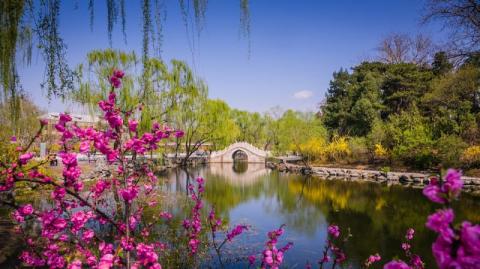Top 100 universities in Asia 2025
Key insights from the Asia Unversity Rankings 2025
- The 2025 Asia University Rankings reveal the best colleges and universities in Asia, featuring institutions from 35 territories and countries
- Japan is the highest represented country with 119 universities in the ranking, while India comes second with 107 ranked institutions. China is the third most-represented country, with 94 universities.
- China leads the way, with two Chinese universities taking the top two positions. China is the best-represented region in the top 10, with five universities present.
- The Asia University Rankings are based on the same 18 performance indicators as the Times Higher Education World University Rankings, but these have been recalibrated to reflect the attributes of Asia’s universities. Here’s the methodology in full.
Top five universities in Asia
1. Tsinghua University, China
Tsinghua University has been committed to a multidisciplinary system for more than 30 years, having undergone many changes since its establishment in 1911.
It is known as one of the most elite universities in China, admitting only those students who score extremely highly in the national exams.
The university offers 51 undergraduate programmes and more than 200 postgraduate degrees.
Tsinghua, which features in the top 20 in the overall THE World University Rankings, also achieves a top 40 position in all 11 of Times Higher Education’s subject rankings.
The campus is in northwest Beijing in a district specifically designated as a university hub. Its buildings feature examples of both traditional Chinese architecture and Western styles. Built on the former site of the Qing dynasty royal gardens, the campus has been named one of the most beautiful in the world.
Many graduates become influential at home and abroad, most notably in Chinese politics. Particle physicist Chen-Ning Yang is a Nobel prizewinner associated with the university.
2. Peking University, China
Peking University was the first modern national university in China, founded at the end of the 19th century.
Now it is known as a centre for progressive thought and research excellence. It has 216 research centres, two of which are national engineering institutions.
Although the university teaches and researches across the sciences, the social sciences and humanities, it particularly stands out internationally for physical sciences and engineering.
The university library is the largest of its kind in Asia, holding 11 million books and other resources.
After relocating in 1952, the main campus is now on the former site of the Qing dynasty imperial gardens and still has some of the original features and landscaping, including gardens, pagodas and historic buildings.
The entrance gates to the campus feature murals that are attractions in their own right.
On campus, there are specific dormitories for the 2,000 international students.
Many prominent thinkers in China are alumni of Peking University. Three Nobel prizewinners are also associated with the institution.
3. National University of Singapore, Singapore
The oldest institution in Singapore and the largest by student numbers, the National University of Singapore combines research excellence and innovation.
It ranks in the top 20 in the world overall, with particularly high scores for research and international outlook, and a standout performance in engineering and technology, law and computer science.
The entrepreneurial focus at the university dates back three decades to the formation of a dedicated centre for innovation and technopreneurship.
NUS uses Oxbridge-style teaching through small-group tutorials, and US-style course credits to make up the degree requirements. Degree programmes are more flexible than those in the UK; as in the US system, students may transfer between courses early in their degree programme and take modules across different faculties, and are required to have a broad, cross-disciplinary selection of courses.
Many students live on campus in one of the 6,000 residential places across various halls, all served by an internal shuttle bus to take them around campus.
Notable alumni include four Singaporean prime ministers and presidents, two Malaysian prime ministers and many other politicians, businesspeople and local luminaries.
4. Nanyang Technological University, Singapore
Nanyang Technological University, Singapore is a research-intensive university with three campuses in Singapore.
As well as featuring in the top five in the 2025 Asia University Rankings, the institution also ranks highly for engineering and technology, and computer science courses.
It consists of six colleges and schools as well as several research institutes, including Singapore’s National Institute of Education and the Earth Observatory of Singapore.
Spread over 80 hectares (200 acres), the Yunnan Garden Campus is the largest university campus in Singapore and is often considered one of the most beautiful campuses in the world.
5. The University of Tokyo, Japan
The University of Tokyo is the highest ranking Japanese university in the Asia Rankings and the World University Rankings.
It was the first national university when it was established in 1877.
It provides courses across the academic spectrum and has 10 faculties, 15 graduate schools, 11 affiliated research institutes (including the Research Center for Advanced Science and Technology), 13 university-wide centres, three main libraries and three institutes for advanced study.
The university has a slightly unusual course structure in that students follow a liberal arts programme at one campus during their first two years before transferring to another campus to study their chosen major.
The University of Tokyo is the alma mater of eight Nobel prizewinners, 15 Japanese prime ministers and five astronauts among its alumni.
Explore more universities in Asia
Best universities in Singapore
Best universities in China
Best universities in India
Best universities in Hong Kong
Best universities in Taiwan
Best universities in Pakistan
Best universities in South Korea
Best universities in Japan
Best universities in Malaysia

Comments